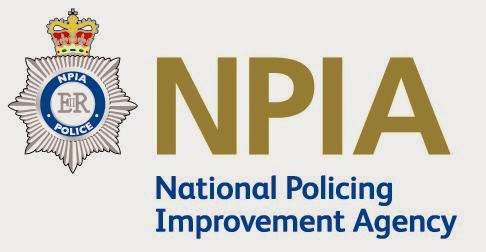Computers play a large part in helping with crime prevention. The first ever computer programme to help officers make sense of large amounts of information was called HOLMES2 Incident room. HOLMES2 incident room identified and helped plot lines of enquiry, kept track of vital pieces of evidence and reduced the amount of paperwork. This great new piece of technology also had a special function called Casualty Bureau- this was a special function that helped to coordinate the repercussion of major incidents, such as terrorist attacks, floods or train crashes. The way in which the system worked was by the relatives providing information about the missing person, this new information would then get put into the system where it would directly and automatically match casualty details from accident scenes, evacuation centres and hospitals. In most cases, if the system has found a match the police will contact the relatives that provided the information with news on the missing person. On September 11th 2001 there was a series of terrorist attacks in the United States, HOLMES2 helped identify British victims by matching them from the missing person’s reports back in the UK to the casualty list in the USA.
 For minor crimes such as theft, criminal damage and damage or theft to a motor vehicle people can now report these types of minor crimes online via the online police website- www.online.police.uk.
For minor crimes such as theft, criminal damage and damage or theft to a motor vehicle people can now report these types of minor crimes online via the online police website- www.online.police.uk. Identification Techniques
Biometrics is also another factor which helps to contribute to dealing with crime prevention. Biometrics is another new technology device which identifies people using physical characteristics such as fingerprints or retinal scans. Biometrics works by recognising someone’s individual/ unique finger pattern. A couple of years ago to record somebody’s fingerprint you had to put your fingertip on a pad of ink and then stamp it down on a piece of paper, however, as technology has become more advanced over the years you can now electronically scan your fingerprint, this also helps to enhance the image if the print isn’t clear enough when you scan it. Computers match the prints against a database of fingerprints which have already been catalogued. DNA is used to help collect information about victims and criminals. Everyone has their own unique DNA; however, identical twins are exempt from this as they share identical DNA. The majority of the time samples of DNA get left at crime scenes; these can be broken down into a profile and compared with that of known criminals or suspects. DNA is all the same and can be found in samples of body fluid, tissue or hair.
Other identification techniques which include the use of using computers include facial recognition and Automatic Number Plate Recognition also known as ANPR. Facial recognition systems are becoming more popular and many are now installed in airports in order to help manage CCTV. ANPR are cameras that can tell police officers within seconds whether a vehicle has been stolen, is known to be involved in crime, or is untaxed. There are many digital cameras which scan and record vehicle registration marks of every passing car. Once the numbers have been collected over a certain amount of time they get cross-checked against a number of databases, including the Police National Computer, the DVLA and police intelligence records.
Evidence collection, tracking, analysis and availability have improved dramatically. Some people think that police officers have become to dependant on modern technology and they have begun to look back on the days of ‘bobby on the beat’ which was the local police officer who knew about what was happening in the local community.
Advantages
-Technology allows for quicker DNA testing.
-High-speed cameras can quickly scan databases and license plates faster than law enforcement recruits can manually capture and track them.
-It is safer using GPS systems to track down a specific car rather than taking part in a high speed chase between the offender and the police.
-Helps to reduce the amount of crime that goes on because everything is monitored so closely.
-A lot of room is saved by having electronic fingerprinting systems rather than lots of pieces of paper in a filing cabinet.
-Facial recognition, DNA printing, DVLA is the most accurate way of collecting data about someone.
Disadvantages
-Police officers are becoming dependant on all the new technology available to them.
-Sometimes inaccurate information can be produced.
-If the system ever breaks there is the possibility that all the data that has been collected could get cleared from the computer.
-Not everyone has Wi-Fi access so if you wanted to report a crime, you wouldn’t be able to do it online.
Personal Experience
I haven’t had much experience when it comes to technology that helps deal with crime prevention; however, I have had one or two experiences. Back in April last year I went to Florida with my friend and when we arrived at Miami airport we had to go through immigration, this is where we had to get our fingerprints scanned. Also when we went through immigration we had to look into this camera so it could record and identify our facial recognition. As I am too young to drive I haven’t had any experiences to do with APNR cameras.

No comments:
Post a Comment